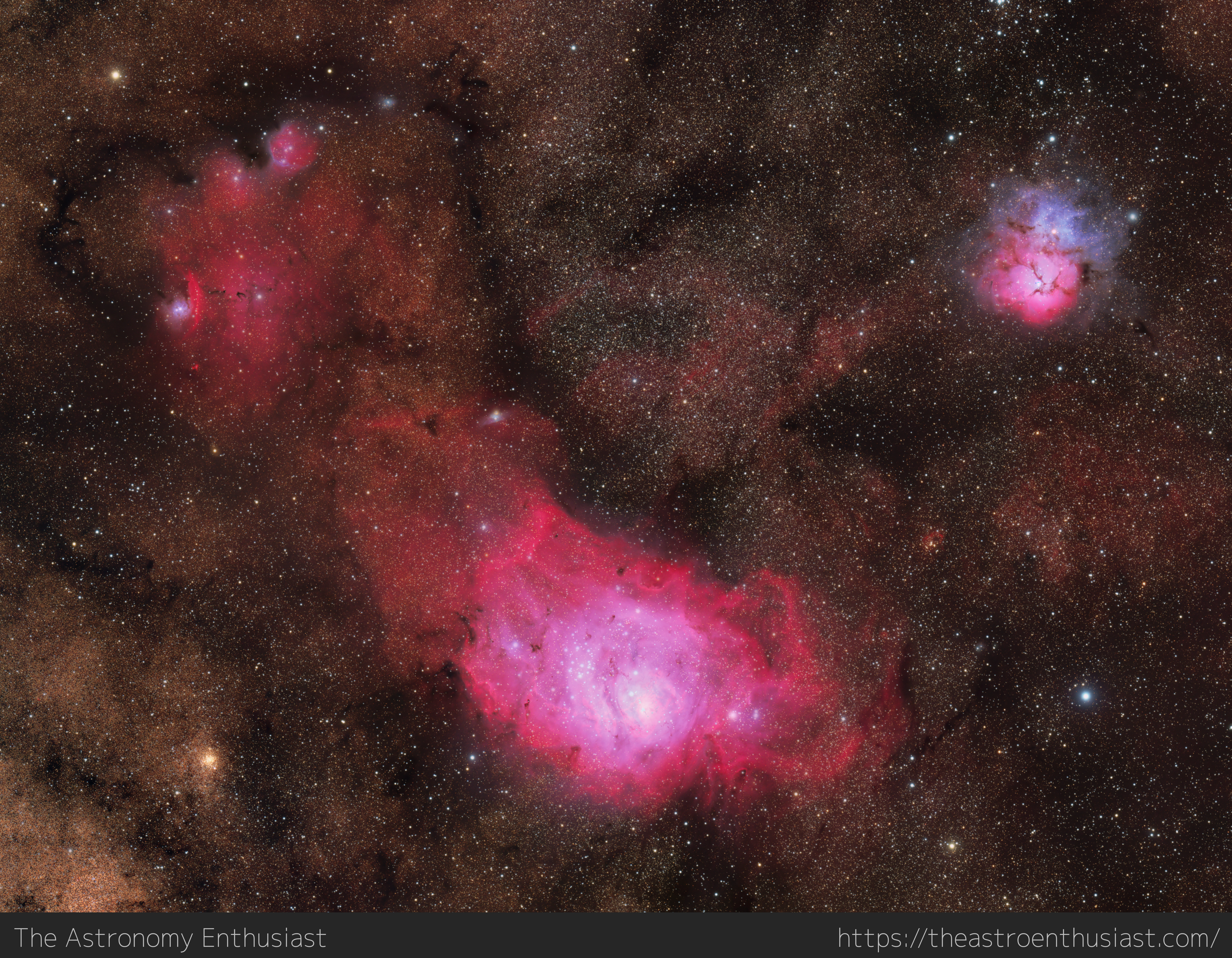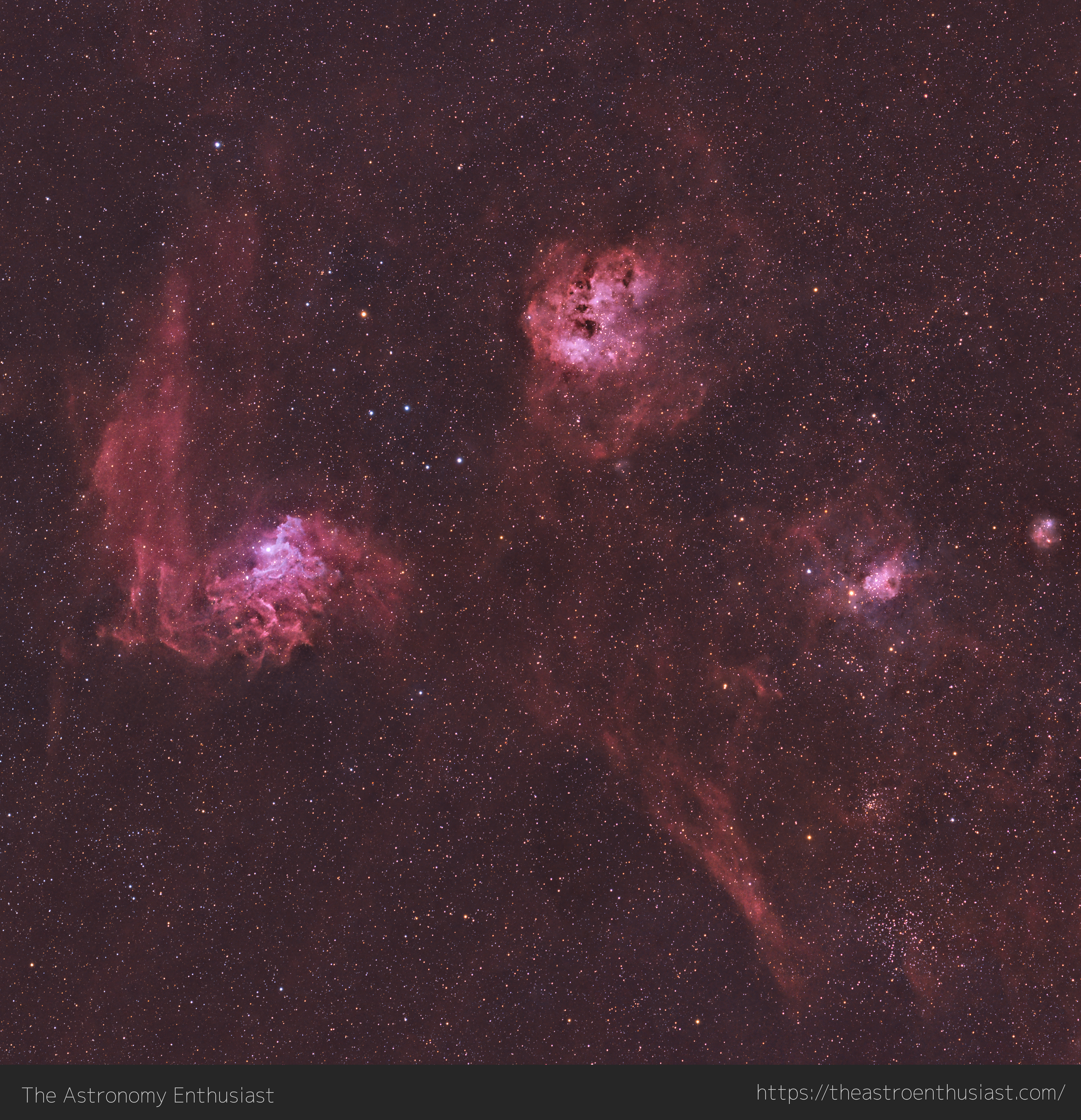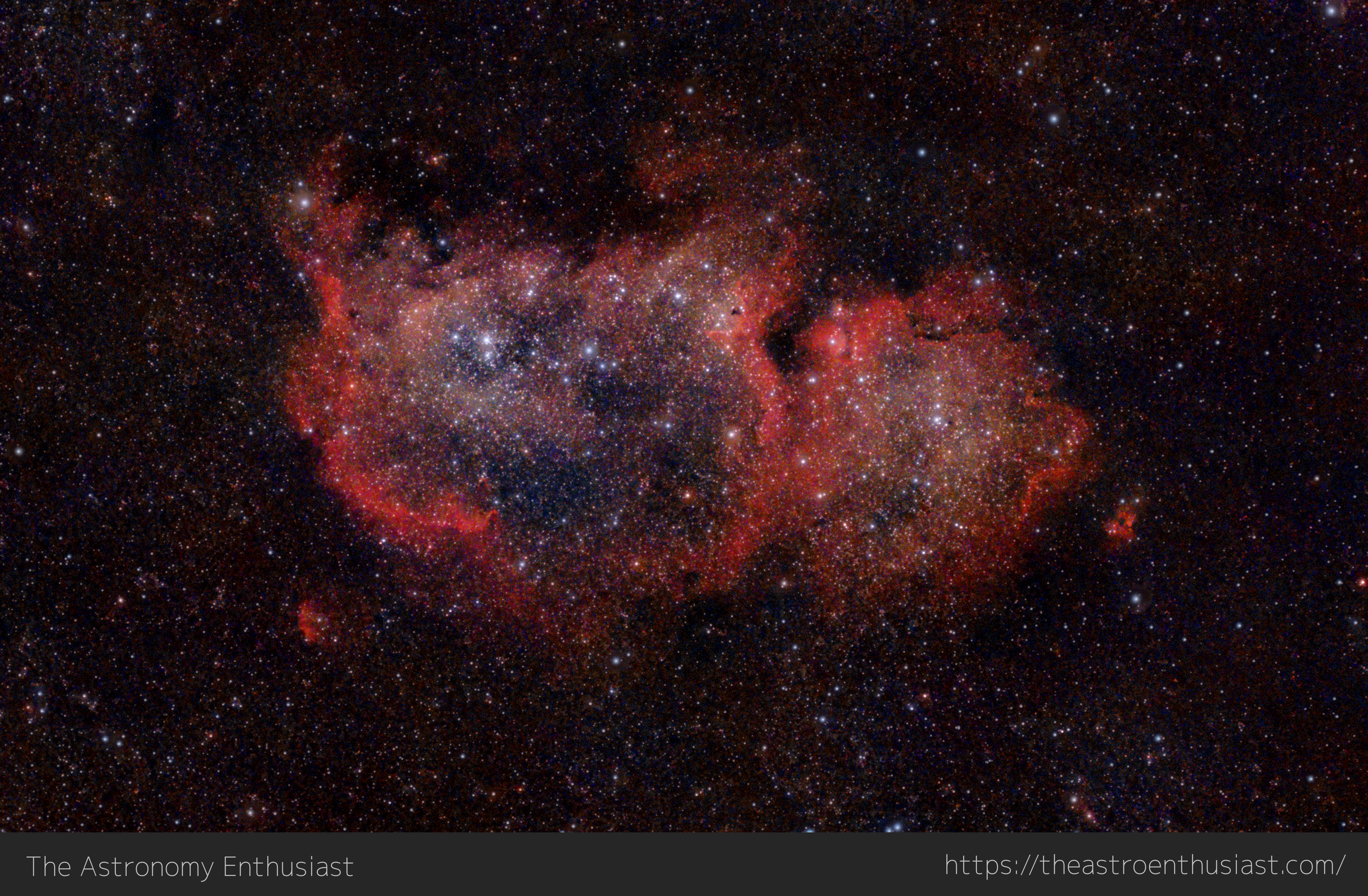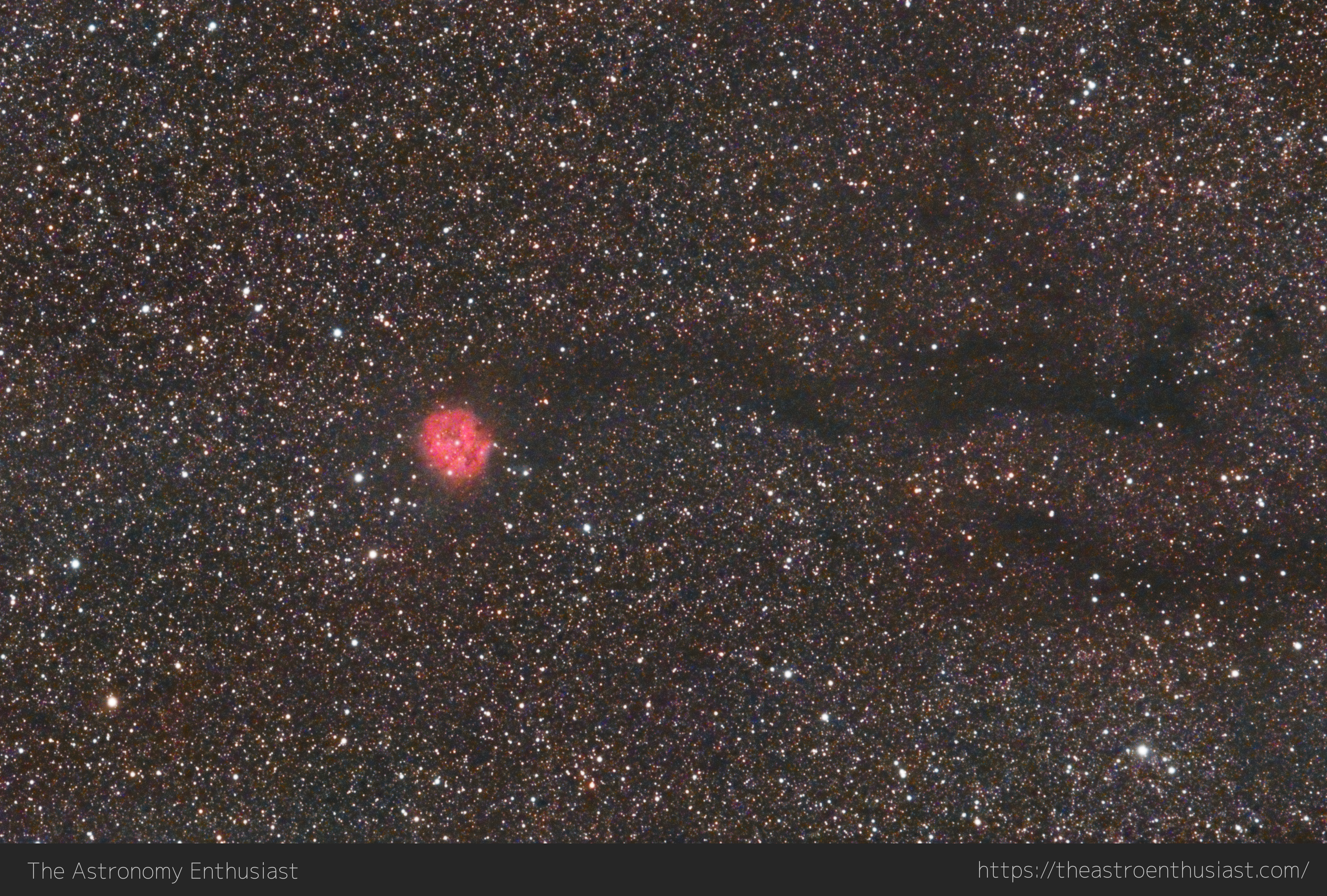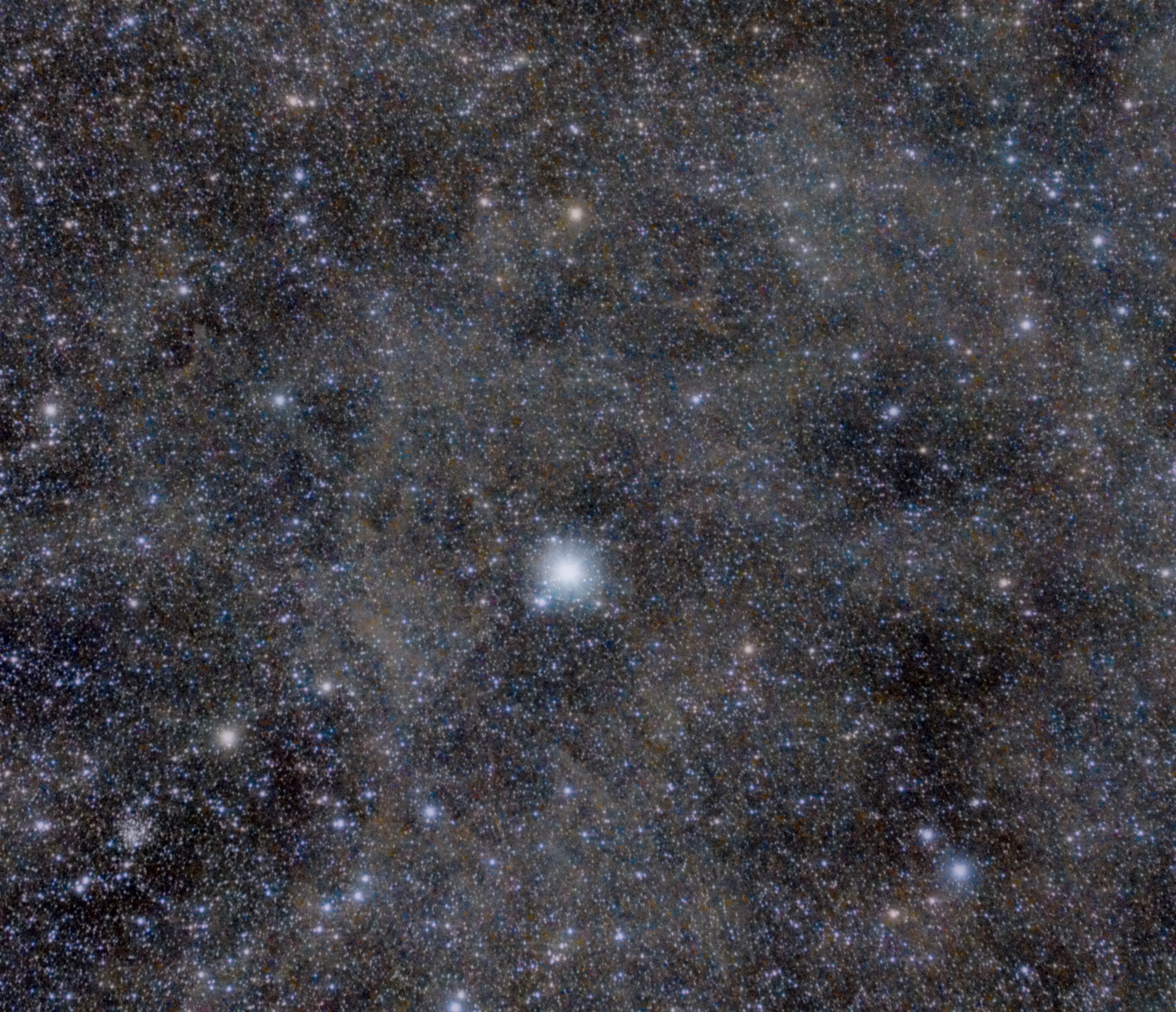The Lagoon and Trifid Nebulae
The Lagoon Nebula (catalogued as Messier 8 or M8, NGC 6523, Sharpless 25, RCW 146, and Gum 72) is a giant interstellar cloud in the constellation Sagittarius. It is classified as an emission nebula and as an H II region. The Trifid Nebula (catalogued as Messier 20 or M20 and as NGC 6514) is an H II region in the north-west of Sagittarius in a star-forming region in a nearby spiral arm’s Scutum-centered part. It was discovered by Charles Messier on June 5, 1764. Its name means […]
Read more